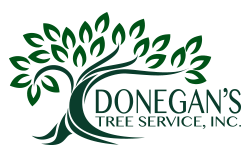Fall Pruning
After what seemed like a never-ending summer, fall is right around the corner. Did you know that most of the trees in our area can have their limbs pruned at any time of the year? It’s true, but many people prefer to have their trees pruned during the fall season. So what does that mean for us in the tree care industry and what does it mean for you? It means we will have a lot of phone calls and evaluations to make for our clients and our schedule gets full, so if you need tree care services, it’s best to plan ahead.
We encourage you to call, send an email, or fill out our online form so that we can schedule your tree evaluation and get your pruning done efficiently. We want to make sure that we have your trees covered, so reach out to us so we can make sure to schedule an appointment for you.
Another thing to remember in September is that we are nearing the best time of year to fertilize your trees. If you have not had your trees fertilized in the past 2–5 years, it’s time to get them a much-needed treatment this November or December. Fertilizing in late fall/early winter is honestly the prime time to provide your trees with nourishment treatments in this region. Our ISA Certified Arborists and crews are here to help you manage all your tree care needs.
As we move into fall and people are thinking about pruning it is super important to remember that there is a big difference between having your trees pruned and having your trees topped. Please note that at Donegan’s we do not encourage topping! Topping is bad! Topping is where too many branches are removed from a tree, either to making branches shorter or in order to shape the tree. In some instances, topping can be as dramatic as removing all the branches down to the stub (trunk).
So, what happens to a tree when you take off too much of it? It causes the tree to experience extreme stress, causing open wounds of a tree to be more vulnerable to pests and diseases. It also triggers a hormonal reaction where a tree will produce a lot of offshoots that are weak and can cause damage later on, and we will also note that these offshoots are typically not pleasing to the eye. Topping can also lead to rot and decay by reducing the number of leaves on the tree. Leaves are important to a tree because they bring in nutrients and food for the rest of the tree. In the most general terms, topping your tree can cause it to go into a state of shock and, before you know it, you’ll have a tree that is in decline and in most cases, the tree will never rebound and will eventually die.
Because so many things can go wrong, we never advocate for or practice tree topping. And if all these reasons were not enough to stop you from topping your tree, doing so is simply really ugly and could lead to a lower property value.
Curious to learn more? This link will provide you in-depth information about why you should not top a tree.

